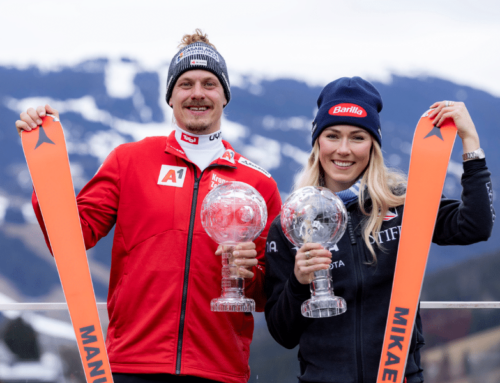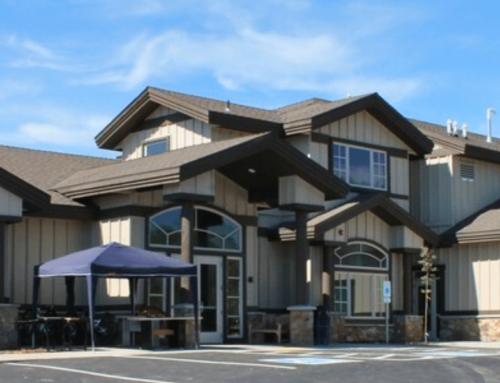Dwyer: It’s not about tech vs speed
I don’t want to frame this discussion as “tech versus speed.” Presenting it as an opposing choice sets the discussion up to be more contentious and overly simplistic. It’s really a question of how to best facilitate alpine development, especially at the younger ages.
You need to do it all, and you need to do it well. General skill development at a young age is critical, and this whole topic needs to be broader: How do we fit all the pieces together?
It’s a fallacy to say that I’m anti-speed. When I coached men, 12 athletes made the U.S Ski Team; 10 of those went on to race World Cup downhill, including Doug Lewis, Jeff Olson and AJ Kitt. When I moved to coaching women, three of the first four were also World Cup speed skiers, including Shannon Nobis and Katie Monahan, who both achieved top-three World Cup placings.
The sport of alpine ski racing has evolved, and when that happens, there are three tendencies: One is to be stuck in the history of what happened in the past — and obviously knowledge of history is important, but it’s critical to avoid being entrenched in an outdated system. A more progressive approach is looking at what top programs and athletes around the world are doing and trying to replicate those strategies. You can build a good system that way, but you’ll never be great. Instead, we should aspire to develop a solid understanding of what has proven successful in the past alongside current best practices while looking forward to anticipate new trends. What are the externals and what’s coming next? This represents visionary planning and leadership.
Downhill really changed in the ‘90s. If you read the recent article written by Tom Kelly about AJ Kitt, he talks about the two Val d’Isere courses, one being more of a glider‘s course and the Bernard Russi-designed course for the 1992 Olympics being more technical. Over time, change in skiing has largely come through two factors: one is equipment and the other is the maturation of the sport. The evolution of equipment has led to higher speeds. As a result, in downhill and super G, they had to create more technical courses and set to control the speed.
In the 1990s, Werner Margreiter took over the Austrian ski team at a time when they hadn’t won a World Cup men’s overall title since Karl Schranz in 1968. At the time, to receive a World Cup start on the Austrian team, you had to specialize in one event, but their goal and their strategy shifted. They sought to have an overall winner within five years. They did it in four, and they actually started dominating the top five. They did so by establishing a slalom-GS team, a GS-SG team, and a SG-downhill team to ensure multiple discipline-start opportunities necessary to win the overall. After the first year, Werner said the SG-downhill group’s time had passed due to the evolution in men’s downhill. In speed, it was ultimately the GS-SG group that shined with the new trend in speed: dominance by great giant slalom and super G skiers. For the U.S., Daron Rahlves is a great example from this period into the 2000s — being world class in giant slalom, super G and downhill.
That’s the context that you have to look at our current landscape: Things have evolved, and they’ll continue to do so. And now we’ve gotten to the point where many of the recent top speed skiers first emerged in slalom.
If you look at the Leever Study, it shows that athletes tend to emerge earlier at the World Cup level in slalom compared to giant slalom — the speed disciplines come later. For women (who mature earlier than men), they’ve pretty much emerged by second-year FIS; they’re ranked top 200 in the world, or starting to score World Cup points.
To do that, you need a lot of time on snow at younger ages, developing a high level of general skill and high volume of slalom training. (Use 15,000-20,000 slalom gates trained annually as a benchmark). You see many top young slalom skiers develop their giant slalom somewhat later. Most of what we do — slalom, GS, SG and free skiing — benefits giant slalom. But slalom, on the other hand, is a very specific discipline requiring specific training and volume. Another positive point is, every ski program in the country can provide quality slalom training and most can provide speed-skill elements. (It’s important to distinguish between days on snow and aggregate time on snow, but we may talk about that in a later piece.)
Other important takeaways from the Leever Study on this matter include:
- Most top American speed skiers in the past 20 years were great tech skiers as juniors (Miller, Rahlves, Nyman, Weibrecht, Ganong, Vonn, Mancuso, Shiffrin)
- This is also true for the majority of top speed skiers from other countries
- Today, 75% of World Cup top-30 downhill and SG men were sub-30-point tech skiers as juniors. It’s sub-20 points for women
So, what do you need to become a top speed skier these days? It’s more about speed skill development and training than speed racing. Most people don’t look closely enough at how super G skill development transfers to downhill. At the elite level, there might only be a three-second difference between a downhill and super G on the same hill. When you’re young, you need to develop speed skills.
As Dan Leever has stated, “Many roads lead to Rome.” There is a wide range of how the top skiers develop skill. An athlete from Squaw will tend to free ski a huge amount in varied terrain; a Buck Hill skier will tend to ski tons of slalom gates, and an eastern skier will have a mix, which is more oriented toward gates. The one thing they have in common: The great skiers all tend to ski more.
It’s not about tech versus speed; it’s about how all of it works together. I believe if you develop with the necessary training to become a great tech skier and have the speed-skill development, then you can emerge in super G and downhill later. If you look at Mikaela (and I know many people are hesitant to use her as an example, but bear with me), she did a good amount of speed training when she was 12 to 14, but she never raced more than two super Gs in a year when she was young. Now she’s winning downhills. She spent a significant amount of time doing general skill development (often 16-24 days prior to gate training), trained copious amounts of high-quality slalom and giant slalom, AND had enough quality speed training, including forerunning NorAm super G races as a J3. To allow for enough general skill and gate volume she raced very little. At 14, despite competing in both Topolino and Whistler Cup, she only had 11 races with one super G at Whistler.
Another important point is the goal of avoiding injuries among younger skiers. I looked back at some of the history we’ve had with strong groups coming out of Vail. One of the limiting factors was injury, so now we’re trying to prevent injury through periodization and higher levels of technical development. It’s pretty simple: The faster you go, the higher the force resisted. Add jumps into the mix, and you’re exposing your body to a lot more force and, therefore, the threat of injury. Developing superior tactical and technical skill is another important factor in reducing injuries. The top young skiers I worked with who had later success, especially in speed events, tended to have very high finish rates in training.
Finally, it’s important to include consideration of college skiing. We had a long period in the U.S. when our national philosophy was four-event development, but many of our national team athletes weren’t strong enough in tech events to race for the top teams at the NCAA level after they left the ski team. And let’s be clear, college is a viable route, so it’s important to make sure our athletes are able to pursue the NCAA pathway. The majority of U.S. ski racing families tend to place a high emphasis on higher education.
I hear all the time that we’ve “always done it this way” or “this is how other great nations are doing it.” And I say, “Well, maybe we need to rethink that.” I guarantee Bill Belichick isn’t looking around the league to mimic what other teams are doing. He’s trying to innovate, not replicate. The U.S. system needs to figure out what’s coming next. And when we figure out where we need to go, then we need to get there as quickly as we can.
Editor’s note: This story is part of our ongoing series on alpine development in North America. Have some thoughts on this? Send a letter to the editor. If it’s good, we’ll publish it.





















